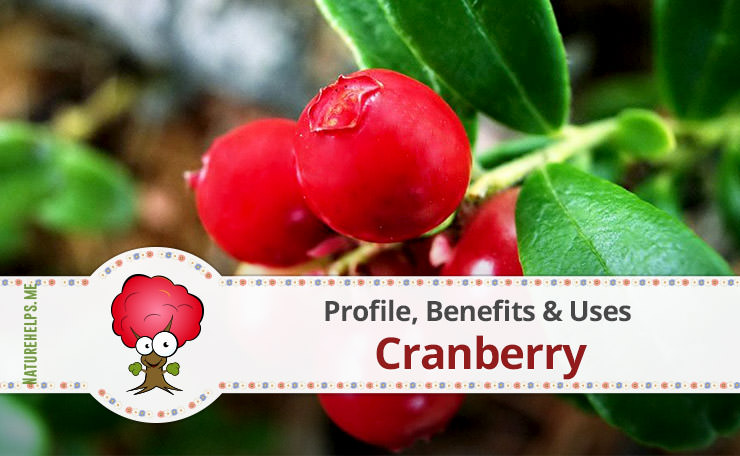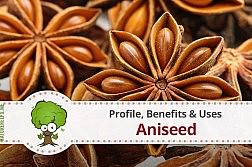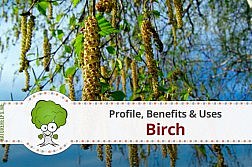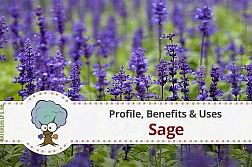Cranberry’s medicinal properties have been recognised for centuries. Native Americans used raw cranberries as a wound dressing. Early settlers from England learned to use the berry both raw and cooked for a number of ailments including appetite loss, digestive problems, blood disorders, and scurvy.
In their natural habitat, the plant grows vigorously in acidic sandy bogs throughout the cooler parts of the Europe, Northern states in the United States and Canada. The plant is actually a dwarf, creeping shrub, or vine, which runs up to 10 to 20 cm in height. It features slender, wiry, not so thick, woody stems bearing small, evergreen leaves.
For medical purposes use ripe berries, collected in the fall until the snow cover plants. Cranberry collected in early spring after the snow melting, more delicious, it accumulates a lot of citric acid, but it is almost devoid of vitamins and lasts very long. Berry gathered in late August and September solid enough, but matures and becomes softer during storage. In October, the berries are dark and juicy. Harvested in late autumn cranberries can be stored until the next harvest (mainly due to the presence of benzoic acid, which is able to kill bacteria and inhibit putrefaction). Berries, stuck by frost, it should be stored frozen.
Chemical Composition of Cranberry
Cranberries contain acid – lemon (it most – 3%, for what is called the northern lemon cranberry), quinic, benzoic acid, chlorogenic acid, ursolic, apple and some others in a small amount. Among the sugars – glucose and fructose, as well as a much smaller amount of sucrose. Found in large quantities in cranberries and pectin (a group of polysaccharides). Cranberries are rich in vitamin C (up to 22 mg%). There are other vitamins: B1, B2, B5, B6, PP, as well as K1 (phylloquinone), which is in cabbage and strawberries. The fruits of cranberry and bioflavonoids betaine found: flavonols and phenolic acids, leucoanthocyanins, anthocyanins, catechins, as well as macro- and microelements (potassium, calcium, phosphorus and less). There is enough iron, manganese, molybdenum, copper, there are iodine, barium, magnesium, cobalt, boron, nickel, lead, tin, silver, chromium, titanium, zinc and others. The content of biologically active substances, mineral salts displays cranberries into the category of one of the most useful berry.
Cranberry Benefits for Health
Berries and leaves of cranberries in folk medicine often used:
- As a tonic
- As an anti-inflammatory;
- As a diuretic;
- As antiscorbutic;
- As an antimicrobial;
- In hypertensive disease;
- For regulation of metabolism; To treat colds;
- When fevers;
- Respiratory diseases;
- In diseases of the throat and sore throat;
- At reduced secretion of pancreatic and gastric juice;
- In diseases of the kidneys, urinary tract and bladder;
- As a prophylactic agent, prevents the formation of kidney stones (changes the acidity of the urine); In anemia;
- When glaucoma to improve vision and other eye diseases;
- In diabetes;
- When skin diseases (psoriasis, vitiligo, urticaria);
- If diarrhea and vomiting;
- To stop hair loss;
- At oncological diseases;
- When thrombophlebitis;
- When vasculitis
In addition to internal use berries and leaves in the form of cranberry extract, fruit drinks, juice, tea, water infusion et al., Fruit pulp and juice are used externally: as an insecticide against head lice and nits; To remove age spots; When skin diseases; For the treatment of pressure ulcers.
Contraindications in usage of cranberries
Cranberries should be cautious to use for gastritis with high acidity, gastric ulcer and duodenal ulcers, and it is absolutely contraindicated in the acute stage of the disease as in acute inflammatory diseases of the liver, stomach and intestines.
How to Make Cranberry Infusion & Decoction
To treat atherosclerosis, gastritis, colitis, and metabolic disorders: Crush two cups of cranberry, add 1/2 cup sugar and 1 cup water, bring to a boil, strain, dilute with water to taste. Drink tea instead of hypertension. One tablespoon of cranberry leaves and 10 berries to fill a thermos cup of boiling water, real 4 hours, strain, bring boiled water to the original volume. The resulting infusion split into 3 parts and take throughout the day for hypertension.
Pain reliever for arthritis and rheumatism: Crush 4 tablespoons if cranberries with 2 tablespoons of sugar, pour 3 cups boiling water. Infuse. Take 3 times a day an hour after eating. The course of treatment – 10 days. It is recommended as a
Cranberry to prevent diarrhea: Pour 2 tablespoons of the resulting mixture, 2 cups very hot water, boil for 10 minutes on low heat, cool, filter. Take 1/2 cup 4 times a day.
To cure liver inflammation with Cranberry: Put one tablespoon of cranberries in a glass, mash berries with a spoon, fill with sugar, pour the hot infusion of black or green tea. This drink will quench your thirst, relieve fatigue, increase efficiency. Cranberry with honey Take 1 cup cranberries, 1 cup of honey and mix. Eat every day if you have inflammation of the liver and in the complex treatment of hypertension.
Cranberry Ointment to reduce inflammation: Mix 20 ml of fresh juice with cranberries 40 g 40 g lanolin and petroleum jelly. The ointment is stored in the refrigerator. Cranberry ointment provides an analgesic effect, reduces inflammation, has an antiseptic effect, dries weeping areas.




